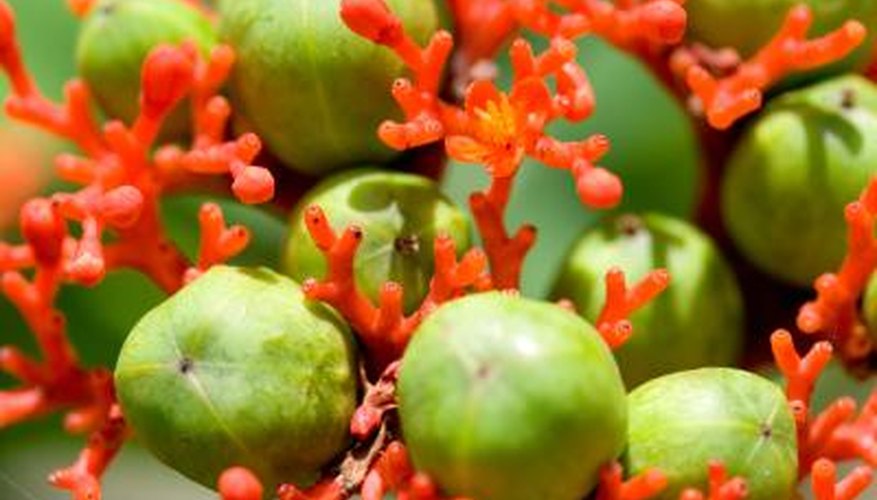The sapote or mammee sapote (Pouteria sapota) is a tropical tree of Mexican and Central American origin that is grown for its edible fruits. Sapote trees can reach 60 feet in height and have large, oval leaves up to 12 inches long. The tree's fruits have rough brown skin, orange or pinkish flesh and one to four brown, shiny seeds. Its young plants are damaged by temperatures below 00 degrees C and mature sapote trees do not survive temperatures below -5.56 degrees C. Mamey sapotes are not related to either the white sapote (Casimiroa edulus) or the black sapote (Diospyros digyna).
Purchase a grafted sapote plant from a nursery or garden centre, as seed-grown plants can take up to seven years to bear fruit. If plants are not available, sow seeds straight away after collecting them from ripe fruit. Use a potting compost mixed with 50 per cent perlite or sharp sand to aid drainage. Plant the seeds with the pointed end protruding 1/2 inch above the surface of the soil.
- The sapote or mammee sapote (Pouteria sapota) is a tropical tree of Mexican and Central American origin that is grown for its edible fruits.
- Purchase a grafted sapote plant from a nursery or garden centre, as seed-grown plants can take up to seven years to bear fruit.
Site your sapote seedling at least 20 feet from the nearest tree or large structure to prevent it from being overshaded or crowded out as it grows. Choose a spot that receives as much sunshine as possible, has well-drained soil and is not prone to flooding. Plant your sapote at the beginning of the rainy season in your area.
Water your sapote plant as soon as the surface of its soil starts to dry and never allow its leaves to wilt through lack of water. In periods with no rainfall, aim to provide one 1 inch of water per tree per week.
- Site your sapote seedling at least 20 feet from the nearest tree or large structure to prevent it from being overshaded or crowded out as it grows.
- In periods with no rainfall, aim to provide one 1 inch of water per tree per week.
Fertilise your sapote plant with up to 1.36 Kilogram of high-nitrogen fertiliser per year for the first few years, applied at regular intervals throughout the year. As the plant reaches fruiting age (three to five years for grafted plants, up to seven for seed-grown plants) change to a balanced fertiliser enriched with micro nutrients and apply up to 6.35 Kilogram per year.
Prune the leading stem of your sapote tree once it reaches a height of about 15 feet. This makes the fruit easier to harvest and reduces the risk of wind damage.
WARNING
Take care when using lawnmowers and other machinery around sapote trees, as mechanical damage to the trunk can kill the whole tree.
